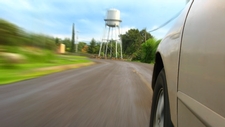Movement of Objects

TEKS Objective
The students will demonstrate and record the ways that objects can move such as in a straight line, zig zag, up and down, back and forth, round and round, and fast and slow.
Essential Understanding
The student knows that energy, force, and motion are related and are a part of their everyday life.
Science Background
Motion: Physics4Kids (website) - Motion is one of the key topics in physics. Everything in the universe moves. Learn more about the basics of force and motion as you navigate this website.
Motion
by Andrew Rader, Physics4Kids, www.physics4kids.com
The Way Things Move: Explorit Science Center (website) - Movement happens as a result of a force acting upon an object. Learn more about the way things move as you read this article.
The Way Things Move
Explorit Science Center, www.explorit.org
Signature Lesson
Paddle Boat:How to Smile.org (website) - Students build an old-fashioned paddle boat from simple materials.
- Supporting Lessons
- Extensions
- Assessment Ideas
- Literature Connections
- Related
TEKS - Additional Resources
Supporting Lessons
Spinners: FOSSWeb (website) - In this activity, students create spinners to investigate how objects move, including back and forth, round and round, and fast and slow.
Elaboration Lessons and Extensions
Inertia: Sid the Science Kid (website) - Students investigate the concept that objects in motion keep moving until something stops them.
Assessment Ideas
Making Objects Move: Science NetLinks (website) - Students identify ways to make an object move and build a structure that can be used to move an object from one place to another. This investigation can help you to assess your students’ understanding of how objects move.
Making Objects Move
Science NetLinks, www.sciencenetlinks.com
Literature Connections
Movement: Things That Go. Pipe, Jim.(ISBN-13: 9781596040182)
Zigzag Movement. Schaefer, Lola M. (ISBN-13: 9780736804011)
Back and Forth. Schaefer, Lola M. (ISBN-13: 9780736803984)
Additional Resources
Feel the Wind, Curious George: PBS Kids (website) - Students make a pinwheel to investigate the wind and learn how it causes objects to move.
TEKS Navigation
Grade 1
Need Assistance?
If you need help or have a question please use the links below to help resolve your problem.

Comments